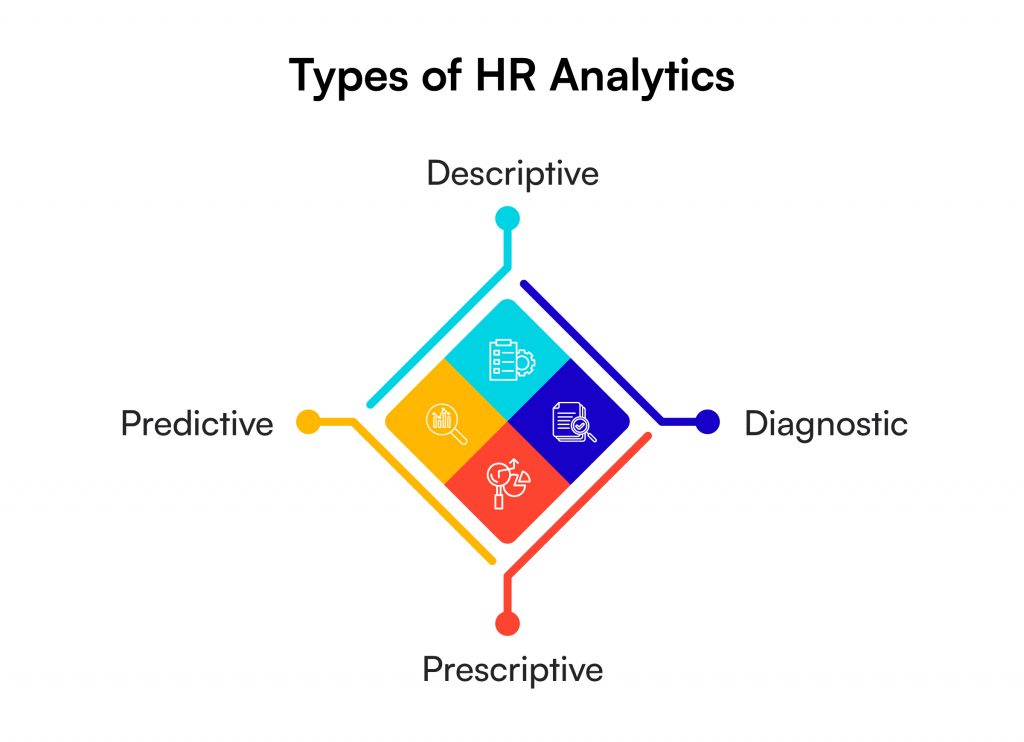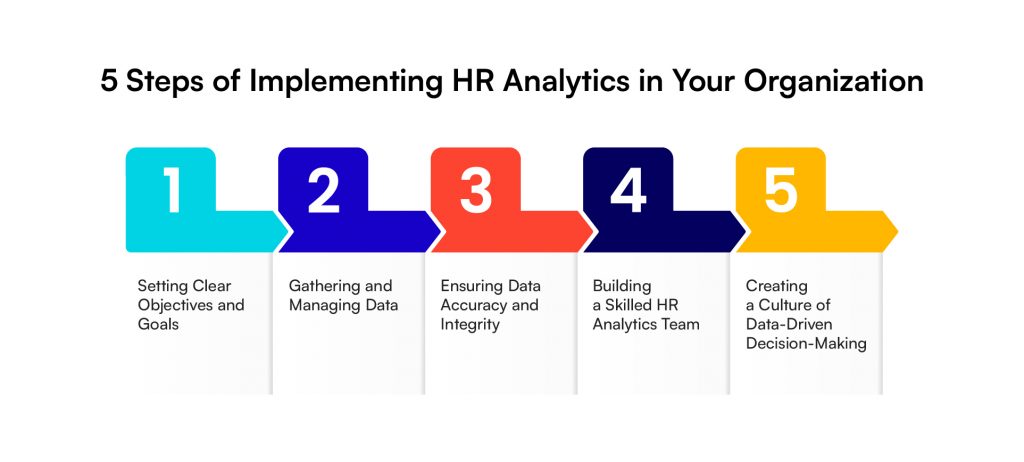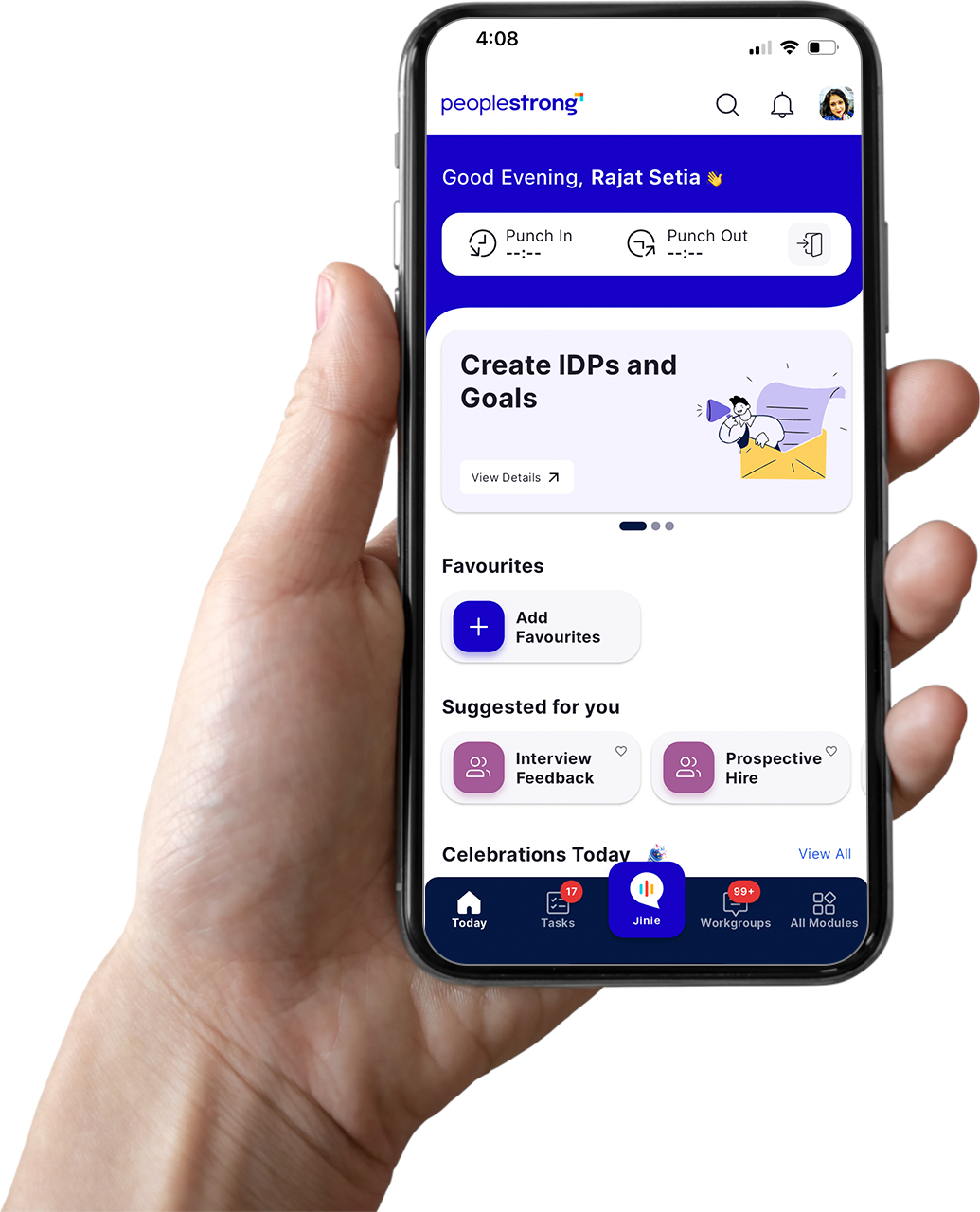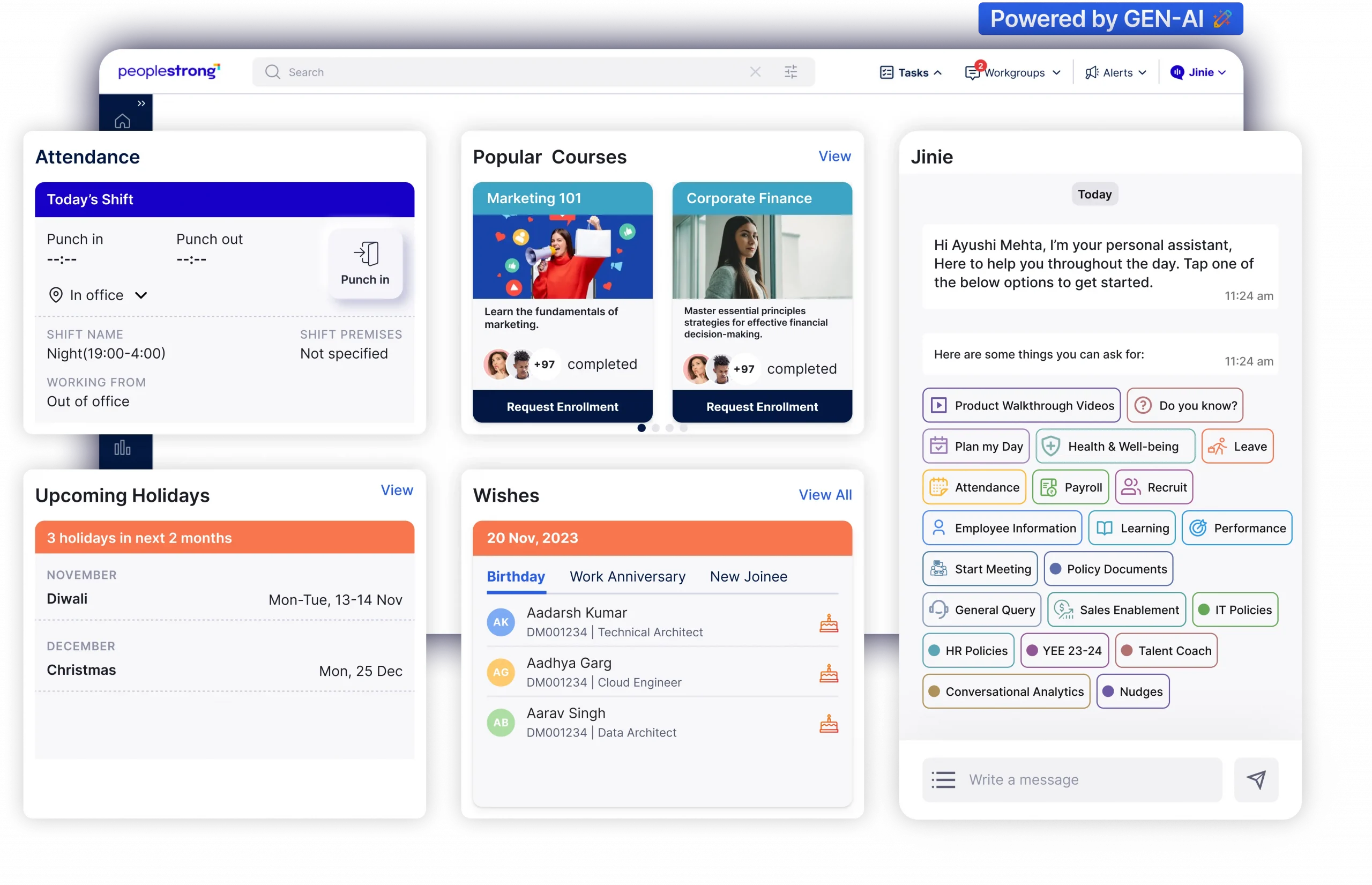Understanding your workforce is a critical element of business success. HR Analytics offers a data-driven approach to managing human resources, enabling organizations to enhance employee performance, reduce turnover, and align HR strategies with business objectives.
Organizations utilizing HR Analytics have reported a 25% increase in productivity, a 50% reduction in attrition, and an 80% improvement in hiring efficiency.
Furthermore, businesses that leverage data-driven HR practices are 19% more likely to outperform their peers in profitability.
Additionally, over 70% of executives consider people analytics a main priority in their organization. The HR analytics market is set to grow by 90%, reaching $3.6 billion over the next three years.
These are not just numbers; these are facts that highlight the substantial benefits of integrating HR Analytics into your organization’s HR strategy.
Having said that, we will explore the fundamental concepts and components of HR Analytics, its strategic value, the different types of analytics, and practical steps for implementation.
Let us now explore how HR Analytics can provide a strategic advantage for your organization.
What is HR Analytics?
HR Analytics is a systematic method of gathering, analyzing, and interpreting data related to human resources. It encompasses various processes and technologies used to understand employee behaviors and their impact on business outcomes.
At its core, HR Analytics focuses on metrics such as employee performance, turnover rates, recruitment efficiency, and training effectiveness.
HR Analytics is not just about collecting data; it’s about transforming that data into actionable insights. This involves using statistical methods and software tools to identify patterns, predict trends, and provide recommendations. By doing so, organizations can make data-driven decisions that enhance employee satisfaction, optimize HR processes, and contribute to overall business success.
In short, HR Analytics helps organizations answer critical questions about their workforce, such as:
- What factors contribute to high employee turnover?
- How can recruitment processes be improved?
- Which training programs yield the best return on investment?
By addressing these questions, HR Analytics enables organizations to create a more engaged, productive, and satisfied workforce.
The Strategic Value of HR Analytics
HR Analytics serves as a crucial tool for enhancing strategic decision-making within organizations. It enables HR departments to move beyond intuition and anecdotal evidence, providing concrete data to guide their actions.
1. Enhancing Decision-Making Processes
HR Analytics offers insights into various HR functions, from recruitment to performance management. According to a study by Deloitte, 71% of companies see people analytics as a high priority area for their organizations. This focus on data-driven HR practices has led to a 15% improvement in decision-making efficiency.
By analyzing this data, organizations can identify what works and what doesn’t, allowing for more informed decisions.
2. Aligning HR Strategy with Business Goals
One of the key benefits of HR Analytics is its ability to align HR initiatives with overall business objectives. This alignment ensures that HR efforts contribute directly to the organization’s success. For instance, if a company aims to improve innovation, HR Analytics can identify the types of employees and skills that foster creativity.
3. Improving Employee Performance and Engagement
With HR Analytics, companies can identify high-performing employees and areas where additional training is needed which can help improve engagement. This targeted approach not only boosts individual performance but also enhances overall productivity.
Organizations with highly engaged and productive employees have seen an increase in the profit by 21%.
4. Reducing Turnover and Retaining Top Talent
Understanding why employees leave and what keeps them engaged is vital. HR Analytics provides insights into turnover patterns and helps develop strategies to retain top talent. This might involve enhancing employee benefits, improving workplace culture, or offering career development opportunities.
Suggested Read:
Complete Guide to Employee Retention in a Volatile Labor Market
5. Gaining Insights into Workforce Trends and Patterns
HR Analytics allows organizations to anticipate future workforce needs and trends. Whether it’s predicting retirement rates or understanding the impact of new technologies, these insights help in proactive planning and resource allocation.
HR Analytics transforms how organizations manage their human resources, turning data into a strategic asset that drives better decisions, aligns HR with business goals, improves performance, reduces turnover, and provides valuable insights into workforce trends.
4 Types of HR Analytics

HR Analytics can be categorized into four main types, each serving a distinct purpose in understanding and improving workforce dynamics:
- Descriptive Analytics: This type analyzes historical data to understand what has happened in the past. It involves summarizing data to provide insights into employee turnover rates, performance metrics, and other key HR indicators. For example, examining annual employee turnover rates to identify trends.
- Diagnostic Analytics: This goes a step further by investigating the reasons behind past events. It helps in understanding the causes of specific HR issues. For instance, analyzing absenteeism data to determine the underlying factors contributing to employee absences.
- Predictive Analytics: Predictive analytics uses statistical models and historical data to forecast future events. It can predict employee turnover, identify potential high performers, and anticipate future hiring needs. For example, predicting which employees are likely to leave the company within the next year.
- Prescriptive Analytics: This advanced type not only predicts future outcomes but also recommends actions to achieve desired results. It provides guidance on the best steps to take to optimize HR functions. For example, suggesting tailored onboarding programs for new hires based on their backgrounds and skills.
Understanding these types of HR Analytics allows organizations to make informed decisions, anticipate challenges, and implement effective HR strategies.
Implementing HR Analytics in Your Organization
Implementing HR Analytics effectively can transform your HR functions and drive strategic decisions. Here’s how to get started:

1. Setting Clear Objectives and Goals
Define specific, measurable objectives that align with your organization’s strategic goals. Whether it’s reducing turnover, enhancing recruitment efficiency, or optimizing training programs, having clear objectives provides direction and purpose.
2. Gathering and Managing Data
High-quality data is the backbone of HR Analytics. Collect data from various sources such as HRIS, performance management systems, and employee surveys. Implement robust data management practices to maintain data integrity and accessibility. This ensures you have a solid foundation for analysis.
3. Ensuring Data Accuracy and Integrity
Accuracy is crucial. Implement processes to clean and validate data regularly. Remove duplicates, correct errors, and ensure consistency across datasets. Establish a data governance framework to maintain high standards and comply with data protection regulations.
4. Building a Skilled HR Analytics Team
Assemble a team with diverse expertise, including data scientists, HR specialists, and IT professionals. Continuous training and development keep the team updated with the latest analytical techniques and tools. This multidisciplinary approach ensures comprehensive analysis and actionable insights.
5. Creating a Culture of Data-Driven Decision-Making
Foster a culture where decisions are based on data. Train managers and HR personnel to interpret data and use insights effectively. Highlight success stories to demonstrate the value of data-driven strategies, gaining buy-in from all levels of the organization.
Overcoming Common Challenges in Implementation:
- Data Privacy: Partner with your Privacy Department to ensure compliance with data protection regulations.
- Resistance to Change: Engage stakeholders early, address their concerns, and demonstrate the benefits of HR Analytics.
- Integration Issues: Choose analytics tools that seamlessly integrate with existing HR systems.
Tips:
• Pilot Projects: Start with small, focused projects to showcase the value of HR Analytics. Use these successes to build momentum.
• Leverage Advanced Analytics Tools: Invest in sophisticated HR Analytics software that offers predictive modeling, machine learning, and intuitive interfaces.
• Continuous Improvement: Regularly review and refine your HR Analytics strategy. Incorporate feedback and stay updated with the latest trends and technologies.
By following these steps, you can harness the power of HR Analytics to drive strategic decisions, improve HR processes, and achieve significant business outcomes.
The Future of HR Analytics in Enterprise Organizations
The future of HR Analytics promises exciting advancements and transformative impacts on how organizations manage their human resources. Here’s what to expect:
Emerging Trends and Technologies:
- Artificial Intelligence (AI) and Machine Learning (ML): AI and ML will significantly enhance HR Analytics by providing deeper insights and more accurate predictions. AI can automate data analysis, identify patterns, and generate actionable recommendations. ML algorithms can predict employee behavior, such as the likelihood of turnover or the impact of training programs on performance.
- Real-Time Analytics: The ability to process and analyze data in real-time will become more prevalent. This will allow HR professionals to make immediate, informed decisions. For instance, real-time analytics can identify emerging trends in employee engagement or detect potential issues before they escalate.
- Enhanced Employee Experience: Personalized employee experiences will be a key focus. HR Analytics can provide insights into individual employee preferences and needs, allowing for tailored development plans, customized training programs, and personalized career paths. This approach can significantly improve employee satisfaction and retention.
Suggested Read:
11 Best Human Capital Management Software in India
The Role of HR Analytics in Shaping the Future Workforce
HR Analytics will play a pivotal role in adapting to changes in the workforce, such as the rise of remote work and the gig economy. It will help organizations manage diverse work arrangements, ensuring optimal productivity and employee satisfaction. For example, analytics can track remote work productivity, identify the best practices for managing remote teams, and evaluate the effectiveness of virtual collaboration tools.
Predictions for the Next Decade:
- Integration with Business Strategy: HR Analytics will become deeply integrated with overall business strategy. This integration will ensure that HR initiatives are aligned with business goals, driving organizational success. For example, analytics can help align workforce planning with long-term business objectives, ensuring the right talent is in place to meet future demands.
- Focus on Employee Well-being: There will be a greater emphasis on using analytics to promote employee well-being. This includes identifying factors that contribute to stress and burnout and implementing strategies to address them. For instance, analytics can track workload levels and identify employees at risk of burnout, allowing for timely interventions.
- Global Workforce Management: As organizations continue to operate on a global scale, HR Analytics will be essential in managing a diverse, international workforce. Analytics can provide insights into cultural differences, regional labor markets, and compliance with local regulations. This knowledge can help organizations tailor their HR practices to different regions and ensure a consistent employee experience worldwide.
How Organizations Can Stay Ahead of the Curve
To remain competitive, organizations must:
- Invest in Advanced Technologies: Continuously upgrade to the latest HR Analytics tools and technologies. This includes adopting AI and ML capabilities to enhance predictive and prescriptive analytics.
- Cultivate Analytical Skills: Develop a culture of continuous learning and ensure HR teams stay proficient in the latest analytical methods. This can be achieved through ongoing training and professional development programs.
- Focus on Data Quality: Maintain high standards for data accuracy and integrity. This is the foundation for all analytics efforts. Implement robust data governance practices to ensure data is reliable and consistent.
- Leverage Predictive and Prescriptive Analytics: Move beyond descriptive analytics to gain forward-looking insights and actionable recommendations. Predictive analytics can forecast future trends, while prescriptive analytics can suggest the best course of action to achieve desired outcomes.
By embracing these trends and focusing on continuous improvement, organizations can harness the full potential of HR Analytics to drive future success. The strategic use of HR Analytics will enable organizations to make informed decisions, improve HR processes, and achieve significant business outcomes.
HR Analytics Software to Transform Your Workplace with Actionable Insights
Imagine having the power to transform your HR data into a treasure trove of actionable insights. With PeopleStrong, this vision becomes a reality. We introduce you to a unified analytics platform that turns data into your strategic ally.
- AI-Powered Insights: Harness the power of AI to gain hindsight, insight, and foresight. PeopleStrong’s AI-driven analytics trace trends and patterns in your workforce data, offering a predictive edge that transforms guesswork into informed strategy.
- Interactive Storyboards: Large data sets can be daunting, but PeopleStrong’s interactive storyboards simplify the complexity. Present insights through compelling visual narratives that drive actionable decision-making.
- Smart Dashboards: Experience a real-time, cockpit view of all employee data. Smart dashboards provide instant updates and customizable charts, saving you countless hours and enabling quick, effective decision-making.
- Predictive Analytics: Eliminate biases and uncover critical insights with advanced predictive models. PeopleStrong’s engine recognizes patterns, converts them into actionable recommendations, and allows you to test decisions with ‘what-if’ simulators.
- Compliance and Security: Handle data with confidence. PeopleStrong ensures your information is securely managed and GDPR compliant, standardizing processes across your HR functions.
- Visualize, Plan, and Empower: Create personalized dashboards with over 75 measures and 178 filters. Visualize your data in an easy-to-understand format, gain stakeholder buy-in with compelling charts, and align planning with business goals.
Transform your HR functions and drive strategic decisions with PeopleStrong. Explore how their advanced HR Analytics software can provide actionable insights to enhance your workforce management. Explore PeopleStrong to learn more and start your journey toward a data-driven HR strategy.
Conclusion
HR Analytics is a powerful tool that transforms how organizations manage their workforce. By providing data-driven insights, it helps improve employee performance, reduce turnover, and align HR strategies with business goals. Embracing HR Analytics enables organizations to make informed decisions, anticipate future needs, and stay competitive in a rapidly evolving business environment.
As we have explored, setting clear objectives, managing data effectively, building skilled teams, and fostering a culture of data-driven decision-making are crucial steps in implementing HR Analytics. The future promises even greater advancements with AI and machine learning, making now the perfect time to start or enhance your HR Analytics journey.
Take the next step towards a more strategic and efficient HR function with advanced tools from PeopleStrong. Begin leveraging the power of HR Analytics to drive success in your organization. Want to know more? Connect with our experts now.










